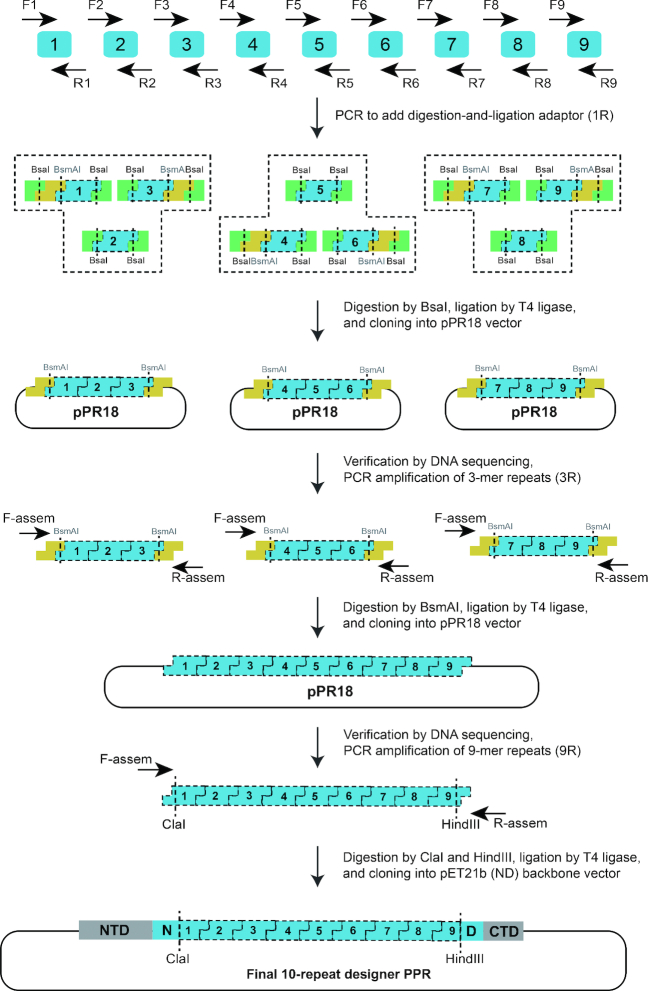Figure 2.
Flowchart of hierarchical ligation and modular assembly for the construction of custom PPRs. Nine individual PCRs with specific primers were performed to obtain the basic assembly units. Each monomer was customized with specific PPR codes, and each PCR product had a unique linker specifying the position of the PCR product in the assembly. After enzymatic digestion with a type II restriction endonuclease, orthogonal overhangs were derived at the junction position using distinct codons to preserve the same amino acids. The unique overhangs facilitated the positioning of each monomer in the ligation product. The fragments were cloned into pPR18 and verified by sequencing during assembly. The final fragments were cloned into a modified pET21b (ND) vector containing NTD and CTD sequences from PPR10 and a whole repeat divided at the GL junction to form a 10-repeat dPPR.

